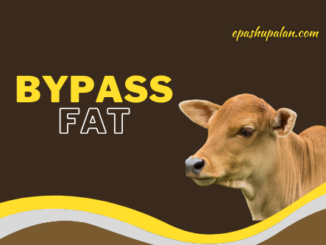Introduction
Water is essential nutrient which is involved in all basic physiological functions of the body. However, it is important to note that water, relative to other nutrients, is consumed in considerable large amounts. Water constitutes 60-70% of an animal’s live weight. Therefore, water availability & quality are extremely important for animal health & productivity. Limiting water availability to livestock will depress production rapidly & severely, and poor quality drinking water is often a factor limiting intake. Considering that water is consumed in large quantities, if water is poor quality, there is increased risk that water contaminants could reach a level that may be harmful.
Properties & functions of water
- Water is the ideal dispersing medium because of its solvent & ionizing powers which facilitate cell reactions.
- It has high specific heat. This enables it to absorb the heat of cell reactions with a minimum rise in temperature.
- The latent heat of vaporization of water also plays an important role in regulating body temperature.
- Other properties of large significance in physiology are the high surface tension, the tendency to form hydrates & high dielectric constant of water.
- It is concerned in digestion, absorption and transport of nutrients & excretion of waste products.
- Water softens coarse feeds and makes them palatable.
Effect of excess of water: Dry matter consumption is reduced to too low a level.
Effects of lack of water: Water restriction results in rapid decrease in feed intake, especially in hot environment which accelerate body water loss.
- Tightening of the skin, loss of weight and drying of mucous membranes and eyes.
- Increase the pulse rate and rectal temperature.
- Increase the concentration of blood and the reduction in blood volume makes blood circulation diff
Water requirement of various species
| Species | Water requirement/ day | DMI: water consumption |
| Adult cattle | 30L | 1:3 to 3.5 |
| Calves | 1:6 to7 | |
| Sheep and goats | 4-6L | 1:4 |
| Swine | 6-8L | 1:3 |
| Poultry | 250ml | 1:2 |
| Adult buffaloes Water 90ml/kg BW for maintenance 2-2.5litre/kg milk produced |
40L | 1:5 to 5.5 |
Impacts of water quality on livestock
Water quality can affect both total water consumption and the general health of livestock. Livestock can tolerate poor water quality better than humans, but if concentrations of specific compounds found in water are high enough, livestock can be affected. Most factors affecting water quality are not fatal to livestock. Livestock may not show clinical signs of illness, but growth, lactation and reproduction may be affected, causing an economic loss to the producer.
It is indicated that livestock, when provided with high quality water, will drink more, eat more and ultimately gain weight more quickly and production will be better. Improved water quality can lead to a decrease in disease and other health problems in animals.
Water quality can be analyzed by the following key properties
- Sensory (organoleptic) attributes such as odour and taste
- Chemical composition
- Toxic compounds (heavy metals, pesticides, herbicides, hydrocarbons etc.),
- Excess minerals or compounds such as nitrate sodium sulphate
- Biological contaminants(blue green algae, bacteria, virus)
- Physiochemical properties(pH, total dissolved solids, hardness, water temperature)
The most common water quality problems affecting livestock production include high concentrations of minerals, sulphates, nitrates and nitrites, bacterial contamination, heavy growth of BGA and chemical contamination associated with agricultural and industrial activities.
- Taste and odour: Manure in the water will impact its taste and odour. Cattle have shown a preference to drink at a clean water sources our contaminated ones. Consumption of contaminated water will not reduce until manure exceeds 0.25% in water. Iron and manganese adversely affect taste and odour of water results in reduced water intake. Good management practices of water bodies, such as keeping source water ways grassed, preventing direct livestock access and aerating dugouts are inexpensive ways to minimize unwanted organoleptic properties and ensure good quality water source.
- Nitrates: nitrates toxicity occurs due to contaminations of ground water by manure or fertilizer. The nitrate ion (NO3-) itself is not especially toxic. The bacteria present in digestive tract of ruminants and herbivores can readily convert nitrate (NO3–) to nitrite (NO2– ). Nitrite is readily absorbed and is quite toxic (10 times more than nitrate).
The clinical signs of nitrate poisoning in animals include lack of coordination, labored breathing, blue discoloration of mucous membranes, vomiting and abortion. The recommended limits of total nitrates in water are 450ml/litre. These levels should not harm livestock by themselves, but may cause problems when combined with feed containing nitrates.
- Sulphate: High concentration of sulphates can be found in surface sources that are fed from saline areas and ground water fed dugouts. The safe limit of sulphur for beef cattle is 0.08 to 0.15% of dietary dry matter intake above 0.4% may be toxic. Sulphate is converted to sulphide in the rumen, which can kill the rumen bacteria that produce thiamine or be directly toxic to brain and can produce neurological symptoms
TBALE: Effects of sulphate on cattle
| Sulphate Concentration(mg/lit) | Effects |
| 500 | May affect calves; over time they adapt with few health problems. |
| >800 | Can affect trace mineral metabolism causing deficiencies of copper, zinc, iron and manganese leading to depressed growth rates, infertility and depressed immune response. |
| >1000 | May cause thiamin (vitamin B1) deficiency, which can lead to polioencephalomalasia (PEM). |
| 7000 or higher | Can result in death |
Sulphate reduction in water bodies is costly as it includes nanofiltration technologies. So the best option is likely to found another source with a lower sulphate concentration.
- Blue green algae (cyanobacteria): Natural toxins originating from cyanobacteria are a primary concern in drinking water for livestock. Cyanobacteria may grow in surface waters of fresh water lakes and rivers throughout the year, but warm water conditions combined with a nutrient rich body of surface water provide ideal conditions of algae blooms.
Cyanobacteria are known to produce acute neurotoxins (which can cause sudden death), hepatotoxins (which can cause death within hours or days), cytotoxins and toxins causing gastrointestinal disturbance.
The best way to avoid algae problems is to prevent blooms by limiting nutrients entering water source and aerating the water. One of the most common chemical used to treat algal blooms is copper sulphate (@1gm/square meter of dugouts).
- Pathogens: bacteria, protozoa, viruses
A variety of microbial pathogens can be transmitted to livestock from drinking water sources contaminated by a wide assortment of causative factors. The risk of contamination is greatest in surface waters(dams, lakes, dugouts etc.) that are directly accessible by stock, or, that receive run off or drainage from intensive livestock operations or human waste.
The pathogens of greatest concern in water supplies for farm animals include enteric bacteria such as E.colai, Salmonella and Campylobacter jejuni. Other bacterial diseases known to affect livestock that may be transmitted through water supplies include Laptospira, Burkholderia pseudomallei and Clostridium botulinm. The most of these organisms mainly affect young animals but some can have negative impacts on mature animals.
Lactospirosis can be spread through contaminated water and cause increased rates of miscarriage, usually occurring between 2 to 5 weeks after the initial infection.
The easiest way to minimize pathogens in water is to prevent inflow from manure sources and prevent direct entry of animals. The sun’s ultraviolet rays are effective in killing pathogens in water that is relatively clear.
Guideline recommendations for maximum level of coli forms vary from 10 to 5000 counts per hundred mg/l with the lower range for calves and higher range for cows.
- Alkalinity and pH: Water ph ranging from 6.0 to 8.5 is considered acceptable for livestock. Water with a pH less then may cause acidosis in cattle, leading to reduced feed intake and performance. Excessive alkalinity(pH approx 10) can cause physiological and digestive upset in livestock
Waters with alkalinity levels lower than 10000 ppm are considered satisfactory. However, for mature livestock, concentrations upto 2500 ppm may do a little harm/unless the carbonate levels exceeds by carbonate levels.
- Total dissolved solids (TDS): TDS or salinity refers to the mineral quantities in water. It includes common salts such as sodium chloride, calcium, magnesium, sulphates and bicarbonates. Livestock have an ability to adapt to saline water to some extent, but abrupt changes may cause harm. The main symptom from ingesting saline water is diarrhea. If TDS id high enough, cattle may avoid drinking the water for several days, followed by a period of high consumption, which cause illness or even death.
| TDS(ppm or mg/L) | Effects of livestock |
| <3000 | Usually satisfactory for most livestock |
| 3000-5000 | May not cause adverse effects for adults livestock.
Growing/young livestock could be affected by loose stool or poor feed conversion. |
| 5000-7000 | Should not be consumed by pregnant or lactating females.
Usually a laxative and may result in reduced water intake. |
| 7000-10000 | Do not use for swine.
Do not use for pregnant or lactating ruminants or horses. |
| >10000 | May cause brain damage or death |
- Water temperature: It has been shown that cool water helps livestock in maintaining a proper body temperature and can increased water intake, in turn increasing weight gains
- Water access and quality improve performance: Increase in milk output has been observed when cows have readily accessible water. Many studies has shown that the more water an animal drinks, the more feed it consumes, which leads to greater weight gain.
TABLE: Safe levels of potentially toxic nutrients & and contaminants in water for livestock
| Element | Safe upper limit of concentration (ppm or mg/L) |
| Aluminum | 5.0 |
| Arsenic | 0.2 |
| Barium | 10 |
| Cadmium | 0.05 |
| Calcium | 1.000 |
| Chromium | 1.0 |
| Copper | 0.5 |
| Fluoride | 2.0 |
| Lead | 0.1 |
| Molybdenum | 0.5 |
| Nickel | 1.0 |
| Nitrate | 100 |
| Nitrite | 33 |
| pH | 5.5 to 9.0 |
| Selenium | 0.05 |
| Sodium | 1.000 |
| Sulfate | 500 to 1000 |
| Vanadium | 0.1 |
| Zinc | 25.0 |









Be the first to comment